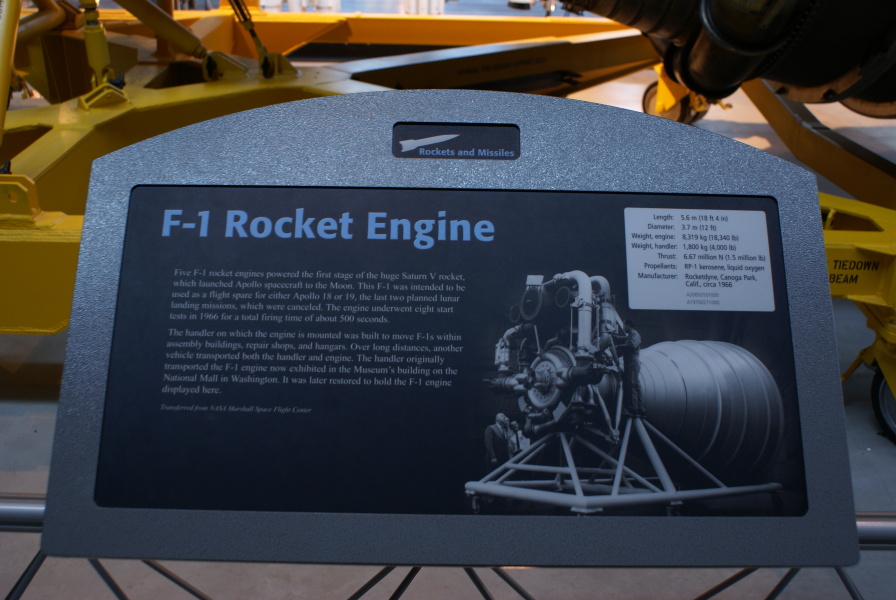| Prev |
heroicrelics.org Udvar-Hazy Center Site Index F-1 Engine Gallery |
Next |
dsc77050.jpg
The sign accompanying the F-1 rocket engine. It reads
F-1 Rocket Engine
Five F-1 rocket engines powered the first stage of the huge Saturn V rocket, which launched Apollo spacecraft to the Moon. This F-1 was intended to be used as a flight spare for either Apollo 18 or 19, the last two planned lunar landing missions, which were canceled. The engine underwent eight start tests in 1966 for a total firing time of about 500 seconds.
The handler on which the engine is mounted was built to move F-1s within assembly buildings, repair shops, and hangars. Over long distances, another vehicle transported both the handler and engine. The handler originally transported the F-1 engine now exhibited in the Museum's building on the National Mall in Washington. It was later restored to hold the F-1 engine displayed here.
Transferred from NASA Marshall Space Flight Center
Length: 5.6 m (18 ft. 4 in.) Diameter: 3.7 m (12 ft) Weight, engine: 8,319 kg (18,340 lb) Weight, handler: 1,800 kg (4,000 lb) Thrust: 6.67 million N (1.5 million lb) Propellants: RP-1 kerosene, liquid oxygen Manufacturer: Rocketdyne, Canoga Park, Calif., circa 1966 A20050101000 [heroicrelics: no longer in the Smithsonian collections database]
A19700271000
Note that A19700271000 is actually the inventory number of the F-1 at the National Mall facility.
The nozzle extension displayed with this F-1 (which bears the same serial number as an F-1 engine at the U.S. Space and Rocket Center) was once D20050101001, but appears to have been removed from the Smithsonian collections database.
Also note that, for long-distance transportation, the F-1 was installed on a different type of dolly and the nozzle extension was shipped using a separate handling fixture.

| Time picture taken | Sun Jun 19 14:06:00 2011 |
| Location picture taken |
Ground Level James S. McDonnell Space Hangar Udvar Hazy Center Chantilly, VA |
| Prev |
heroicrelics.org Udvar-Hazy Center Site Index F-1 Engine Gallery |
Next |